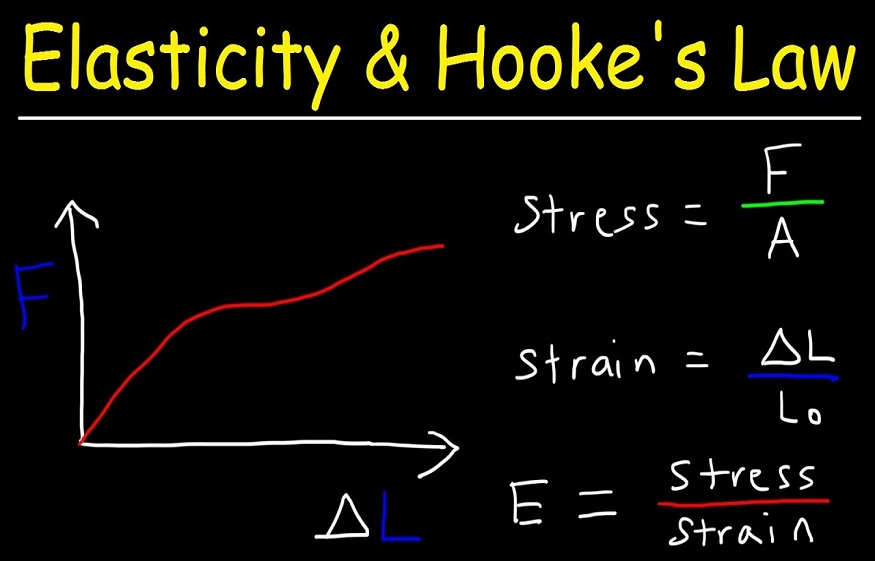Elasticity and Hooke’s Law
3 min read
On applying external force or load, the shape and size of the body change. If a body regains its original shape and length when the applied force or load is removed, it is said to be elastic. The property of a body by virtue of which it regains its original shape or size on the removal of external force applied to it is called elasticity.
Elasticity
The material can be either elastic or plastic. The property of a solid body by which it regains its original shape or size when the external force is removed is known as elasticity. If the body completely regains its original form when the reforming force acting on it is removed, it is said to be a perfectly elastic body.
Stress
When the deforming force is applied to an object, restoring force is developed within the body. The restoring force per unit area of the object is called stress. This restoring force will be equal to the deforming force or applied force. The SI unit of stress is N/m2. There are different types of stress, like normal stress, shearing stress and bulk stress.
Normal stress
Normal stress is the restoring force per unit area perpendicular to the body’s surface. Tensile stress and compressive stress are restoring force or deforming force that acts per unit area perpendicular to the cross-section of the body.
- Tensile stress: When two equal and opposite forces are applied to a circular rod to increase its length, a restoring force is formed within the rod that is equal to the applied force.
- Compressive stress: When two equal and opposite forces are applied at the rod’s ends to decrease the length of the rod, the restoring force equal to the applied force comes into existence. This restoring force per unit area is called compressive stress.
Shearing stress
When two equal and opposite forces act along the tangents to the surface of the opposite faces of the object, then one face of the object gets displaced with respect to the other face. The object is under tensile stress or shearing stress.
Bulk stress
When an object is immersed in a fluid, the fluid exerts a force on the object. As a result of this, the volume of the object will decrease, and the object is under stress known as bulk stress, volume stress or hydraulic stress.
Strain
The ratio of the change in the configuration (shape, length or volume) to the original configuration of the body is called strain. There are three types of strain: longitudinal strain, volume strain and shear strain.
Longitudinal strain
Longitudinal strain is the change in the length to the original length of the body.
Volume strain
Volume strain is the ratio of the change in volume to the original volume of the body.
Shear strain
Shearing strain is defined as the angle through which the face of the body originally perpendicular to the fixed face is turned when it is under the shearing strain.
Hooke’s Law
The relation between stress and strain is given by Hooke’s law. According to Hooke’s law, stress is directly proportional to strain. The ratio of stress to the strain is equal to the constant. The constant is called the modulus of elasticity.







I’ve been following this blog for years and it’s amazing to see how much it has grown and evolved Congratulations on all your success!
Very interesting topic, thanks for putting up.Expand blog